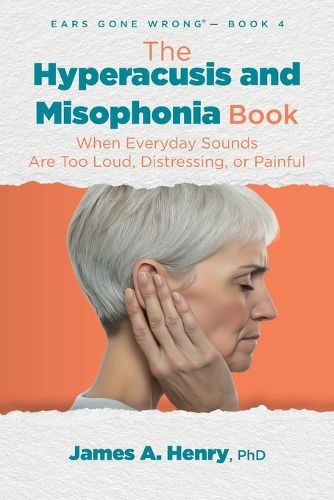Readings Newsletter
Become a Readings Member to make your shopping experience even easier.
Sign in or sign up for free!
You’re not far away from qualifying for FREE standard shipping within Australia
You’ve qualified for FREE standard shipping within Australia
The cart is loading…






This title is printed to order. This book may have been self-published. If so, we cannot guarantee the quality of the content. In the main most books will have gone through the editing process however some may not. We therefore suggest that you be aware of this before ordering this book. If in doubt check either the author or publisher’s details as we are unable to accept any returns unless they are faulty. Please contact us if you have any questions.
Some people have difficulty tolerating everyday sounds. These people are hypersensitive to sound compared to the average person. The term hyperacusis is often used to describe a sound hypersensitivity disorder. Misophonia is also used, but it's a different disorder.
There are actually five sound hypersensitivity disorders. Each has unique characteristics. This book explains these disorders, how they differ, and how they can be diagnosed and treated.
What are the five sound hypersensitivity disorders?
Loudness hyperacusis: Sounds are perceived as unbearably loud when they seem normal to other people. Pain hyperacusis: Sound causes piercing pain in or around the ears. Misophonia: Certain sounds cause emotional reactions, especially sounds from the mouth and nose of others. Noise sensitivity: Sound in general causes irritation/annoyance. Phonophobia: Person has excessive and persistent fear that sound will be too loud, distressing, or painful.
Who can benefit from this book?
The book is intended for both healthcare professionals and the general public. It is written with the rigor that is required for peer-reviewed scientific articles, and includes over 200 references that support the text. To make the book understandable to all, technical and medical terms are minimized, and they are explained when used.
$9.00 standard shipping within Australia
FREE standard shipping within Australia for orders over $100.00
Express & International shipping calculated at checkout
This title is printed to order. This book may have been self-published. If so, we cannot guarantee the quality of the content. In the main most books will have gone through the editing process however some may not. We therefore suggest that you be aware of this before ordering this book. If in doubt check either the author or publisher’s details as we are unable to accept any returns unless they are faulty. Please contact us if you have any questions.
Some people have difficulty tolerating everyday sounds. These people are hypersensitive to sound compared to the average person. The term hyperacusis is often used to describe a sound hypersensitivity disorder. Misophonia is also used, but it's a different disorder.
There are actually five sound hypersensitivity disorders. Each has unique characteristics. This book explains these disorders, how they differ, and how they can be diagnosed and treated.
What are the five sound hypersensitivity disorders?
Loudness hyperacusis: Sounds are perceived as unbearably loud when they seem normal to other people. Pain hyperacusis: Sound causes piercing pain in or around the ears. Misophonia: Certain sounds cause emotional reactions, especially sounds from the mouth and nose of others. Noise sensitivity: Sound in general causes irritation/annoyance. Phonophobia: Person has excessive and persistent fear that sound will be too loud, distressing, or painful.
Who can benefit from this book?
The book is intended for both healthcare professionals and the general public. It is written with the rigor that is required for peer-reviewed scientific articles, and includes over 200 references that support the text. To make the book understandable to all, technical and medical terms are minimized, and they are explained when used.